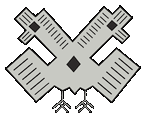Quetzaltenango, Guatemala
The department of Quetzaltenango houses diverse industries related to weaving, including jaspe or ikat dying, embroidering and weaving on back strap and floor looms.
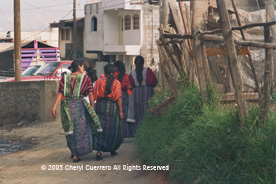
The traje in the department of Quetzaltenango includes an apron, often with lace edges, a jaspe or ikat skirt, and a hand woven huipil in a style often specific to the community. Photo by Cheryl Guerrero 2005.
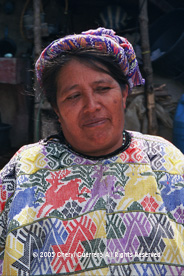
Unique traje or clothing is still in evidence outside of "Xela" or Quetzaltenango, the second largest city in Guatemala. This Concepción woman both sells and wears her back strap weavings, and has taught all her daughters to do the same. Photo by Cheryl Guerrero 2005.
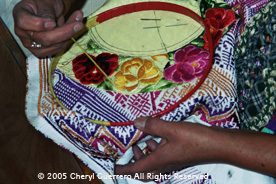
Embroidery, both by hand and machine, is popular throughout the highlands. This hand embroidery is from the Guipil de Nebáj workshop in San Juan Ostuncalco. Photo by Cheryl Guerrero 2005.
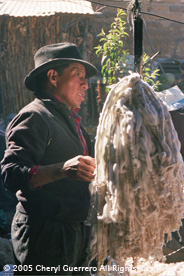
Lucas Pastor, owner of a dye workshop in Salcajá, weighs a bundle of bound jaspe or ikat thread prior to submersion into a boiling vat of dye. Photo by Cheryl Guerrero 2005.
